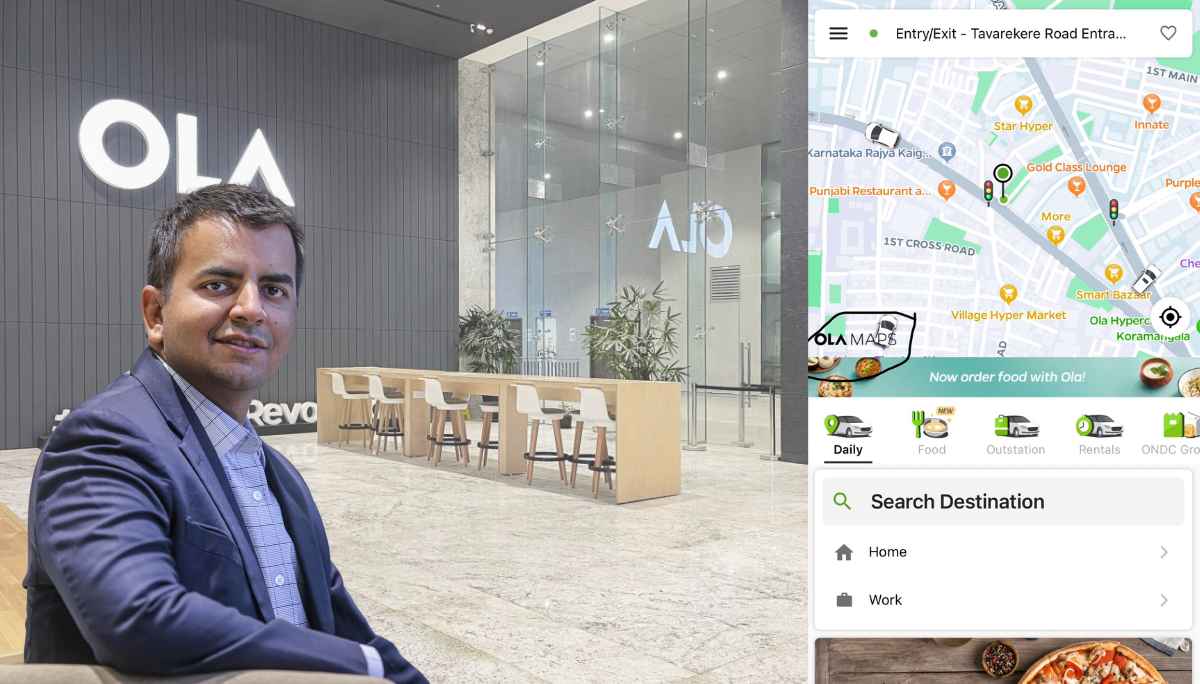Ola Cabs, a leading ride-hailing service in India, has made a significant decision to switch from Google Maps to its own developed Ola Maps. This strategic move is expected to save the company a whopping 100 crore rupees annually. Bhavish Aggarwal, Chairman of Ola Group, announced the launch of Ola Maps and highlighted the cost-saving benefits of this shift. But what does this mean for Ola, its drivers, and the broader ride-hailing industry?
Background of Ola Cabs
Ola Cabs, founded in 2010 by Bhavish Aggarwal and Ankit Bhati, has rapidly grown to become one of the largest ride-hailing services in India. The company has expanded its services across various cities in India and internationally, providing millions of rides to customers every day.
The Role of Maps in Ride-Hailing Services
Maps are the backbone of ride-hailing apps like Ola. They are crucial for navigation, determining the shortest and fastest routes, estimating fares, and providing real-time updates to drivers and passengers. Google Maps has been the go-to service for most ride-hailing apps due to its accuracy and comprehensive data.
After Azure exit last month, we’ve now fully exited google maps. We used to spend ₹100 cr a year but we’ve made that 0 this month by moving completely to our in house Ola maps! Check your Ola app and update if needed 😉
Also, Ola maps API available on @Krutrim cloud! Many more… pic.twitter.com/wYj1Q1YohO
— Bhavish Aggarwal (@bhash) July 5, 2024
Ola Maps: The New Direction
Why Ola Developed Its Own Maps
Ola’s decision to develop its own mapping service stems from the need to reduce dependency on third-party services and cut costs. By creating Ola Maps, the company can tailor the service to its specific needs and optimize it for better performance within its operational areas.
Key Features of Ola Maps
Ola Maps comes with a host of features designed to meet the needs of both drivers and passengers. These include:
- Navigation API: Provides accurate and real-time navigation routes.
- Places API: Helps in identifying landmarks and points of interest.
- Tiles API: Ensures efficient loading of map data.
- Routing API: Optimizes routes for better efficiency and reduced travel time.
Integration with Ola Services
Ola Maps is integrated into the Ola app and is available on both Android and iOS platforms. This seamless integration ensures that drivers can transition smoothly from Google Maps to Ola Maps without any disruption in service.
Financial Implications
Cost Savings
One of the most significant benefits of switching to Ola Maps is the cost savings. Ola previously paid approximately 100 crore rupees annually to Google for using its mapping services. By developing its own maps, this expense is now eliminated, allowing the company to allocate those funds to other areas of growth and improvement.
Impact on Pricing and Revenue
The cost savings from using Ola Maps could potentially allow Ola to offer more competitive pricing for its rides, thereby attracting more customers and increasing revenue. Additionally, having control over its mapping service can lead to innovations that enhance user experience, further driving customer loyalty and growth.
Technological Advancements
Use of AI and Machine Learning
Ola Maps is not just a static mapping service; it leverages AI and machine learning to continuously improve its accuracy and efficiency. These technologies help in predicting traffic patterns, suggesting alternative routes, and providing real-time updates to drivers and passengers.
Collaboration with GeoSpoc
In October 2021, Ola acquired GeoSpoc, a Pune-based geospatial services company. This acquisition was a strategic move to bolster Ola’s mapping capabilities and develop a robust mapping service tailored to its needs. The collaboration has resulted in a highly customized mapping service that meets the unique demands of the ride-hailing industry.
User Experience
Benefits for Drivers
Drivers will benefit from the optimized routes and real-time updates provided by Ola Maps. The service is designed to be intuitive and easy to use, ensuring that drivers can focus on providing a smooth ride rather than worrying about navigation issues.
Benefits for Passengers
Passengers can expect accurate fare estimates, timely arrivals, and a seamless ride experience with the use of Ola Maps. The integration of points of interest and landmarks also enhances the overall travel experience, making it easier for passengers to find and reach their destinations.
Conclusion
Ola Cabs’ decision to switch from Google Maps to Ola Maps is a bold and strategic move that is set to bring substantial cost savings and operational efficiencies. By leveraging its own mapping service, Ola is not only reducing dependency on third-party services but also paving the way for innovative solutions tailored to its specific needs. This move is expected to benefit drivers, passengers, and the company’s bottom line, positioning Ola for continued growth and success in the competitive ride-hailing market.
FAQs
- Why did Ola switch from Google Maps to Ola Maps? Ola switched to reduce costs and create a mapping service tailored to its specific needs, ultimately saving 100 crore rupees annually.
- What are the key features of Ola Maps? Ola Maps includes navigation, places, tiles, and routing APIs, all designed to provide accurate and efficient mapping services.
- How will this change benefit Ola drivers? Drivers will benefit from optimized routes, real-time updates, and a seamless integration with the Ola app.
- What technological advancements does Ola Maps use? Ola Maps leverages AI and machine learning to improve accuracy, predict traffic patterns, and provide real-time updates.
- Will Ola Maps be available on all platforms? Yes, Ola Maps is integrated into the Ola app and is available on both Android and iOS platforms.




